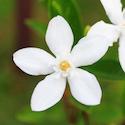Cestrum nocturnum, most commonly known as night-blooming jasmine, is a gorgeous vine or shrub that is characterised by those exquisite white to yellow trumpet-like flowers that are amongst the most scented in all Jasmine vines.
Although this jasmine plant is not too complicated to care for, pests, such as spider mites or poor watering techniques, may cause its leaves to turn yellow and lose their famous deep green foliage. So, why are my night-blooming jasmine leaves turning yellow?
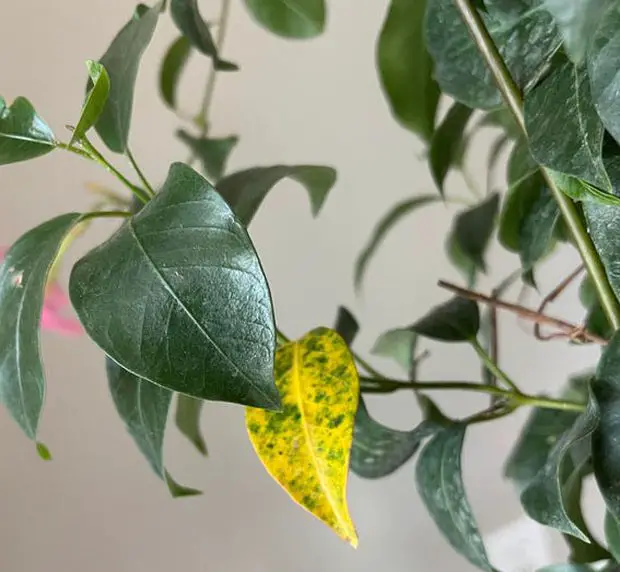
Because they undergo a process called chlorosis, an aberrant yellowing of the leaves, due to the lack of chlorophyll. The main reasons include poor watering techniques, suboptimal potting soil composition, nutrient deficiencies, pests, diseases and limited sunlight exposure.
How do you fix yellow leaves on plants?
Watering and sunlight. How often do you water night-blooming jasmine?
Under-watering
The lack of water or not enough levels of water, will cause your night-blooming jasmine leaves to turn yellow. Especially, at the end of the spring and summer time, when there is a lack of rain and there is too much dryness in the environment, the leaves of our night-blooming jasmine will turn very crumbly, crunchy and with a deep yellow tone.
If you were to rip off one of those leaves and squeeze it, you would get a crunchy powder out of it, that is the sign of lack of water. The way we fix this is by increasing the watering regime for our night-blooming jasmine plant.
Cestrum nocturnum, before becoming well established, it requires a thorough, weekly watering regime, however, if the weather is too hot, you will need to double-check the soil for moisture. In case it gets too dry and you will have to probably water it every day to avoid your leaves to turn yellow and get dry.
Over watering
Excessive watering and the lack of a proper draining system, especially, during the rainy season, the soil bed or your pot will fill up with too much water and won’t be able to drain all the way.
When this happens, the oxygen circulation process is hampered in the soil and that prevents the night-blooming plant from absorbing the required nutrients also the rooting system will start rotting up developing wilt and other fungi. The way we fix this issue is by making sure that our pot has a hole at the bottom of it so that the water can properly drain, as we know, our night-blooming jasmine does not like drenched and too wet soil.
For this, I totally recommend getting my favourite type of pots that already come with strategic holes to help draining the water in our Night-blooming plants. Cche out the Planter Set of 3, Raised Garden Bed with Drainage Hole.
Also ensure that in those heavy rain days, simply move your plant to an area where there is a ceiling and can be protected from those heavy precipitations. The same principle applies to an outdoors planted jasmine, you can cover it with some film, to create an umbrella sort of scenario that would protect our plant from getting drowned.
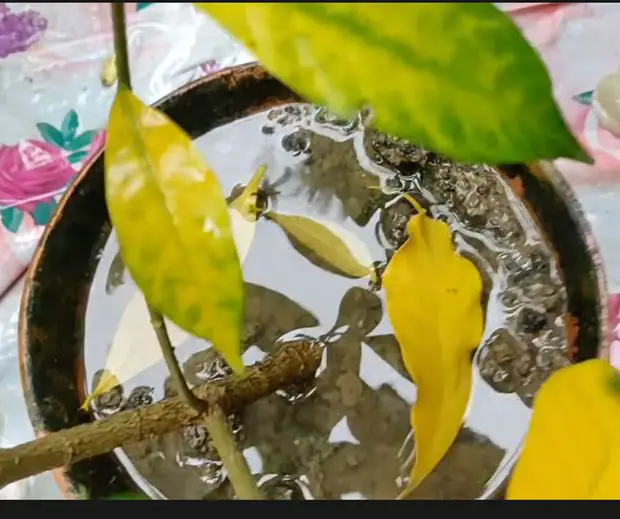
Lack of light
If our plant is not getting enough light our night-blooming jasmine plant leaves turn yellow. If there is not enough light hitting the leaves then the rate of photosynthesis is very limited, impairing the growth of the plant. This is an easy fix, simply ensure the light is hitting semi directly our jasmine plant for about 5-6 hours a day and the situation should resolve within days. If the days were a bit too gloomy and not enough sunlight is available, try both of my recommended artificial lights for indoors and my favourite waterproof artificial lights for outdoors. They are phenomenal and work incredibly for those days when it is simply too cloudy.
Nutrient deficiency
Potassium (K) deficiency
Potassium is an essential macronutrient involved in all aspects of plant growth and metabolism. it is also the main component involved in the responsiveness of the plant to behave in response to a stress factor/s, such as pests, diseases, drought, etcetera.
Potassium deficiency will first appear in the lowest leaves of our night-blooming plant, in the form of bright yellow around the leaves’ margins. It first appears at the bottom of the jasmine plant due to the fact that potassium quickly and naturally moves from older to younger leaves.
If potassium deficiency persists, these symptoms will progress to the middle of the plant, with the leaves first turning yellow at the tip but eventually, the entire foliage will turn yellow and the overall look of the plant will be stunned and stressed. The way we identify this issue is by regularly testing the soil for these nutrients and pH.
We can help fix this issue by purchasing easily available red salt powder or liquid potash to add to our night-blooming jasmine plant soil. The recipe is to use half of a tablespoon to be dissolved in a litre of water. Then, shake it properly and pour it into the plant soil bed, once every week or every 10 days. An alternative to potash powder is to use dried-out banana peels.
You can dry them out by leaving them under the sun for about 10 to 15 days and you can then make a powder out of them. Once you have this powder, dissolve a tablespoon of it in a litre of water, then pour it over the night-blooming jasmine plant once a week, until the issue is resolved.
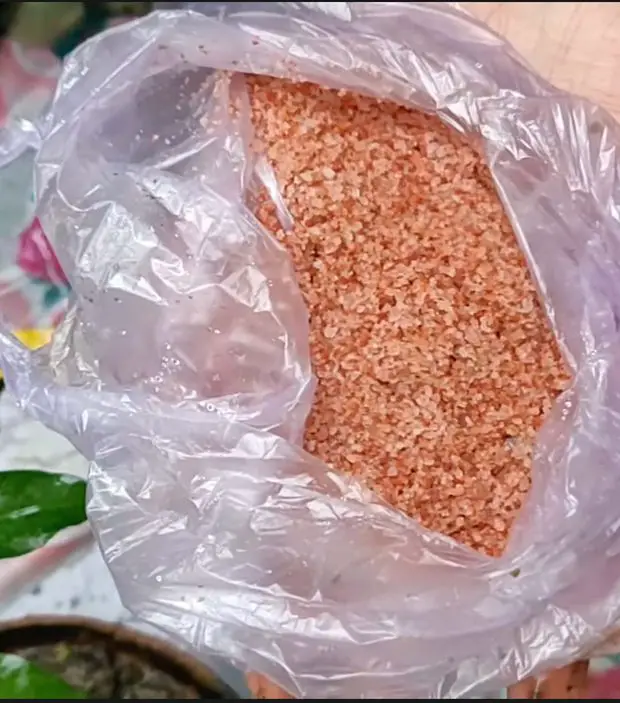
Magnesium and sulphur deficiency
Magnesium is a micronutrient that is a key, central atom in the chlorophyll molecule. It works as the catalyst for the many enzymes involved in the plant growth process, stabilises the nucleic acids and contributes to the photosynthesis process.
Sulfur is an essential atom involved in immobilising the chlorophyll molecule. It is involved in the protein synthesis of the plant and it is crucial in the fixation of another essential macronutrient like nitrogen.
Usually, sulphur deficiency symptoms show on young leaves first appearing pale yellow and eventually delaying the growth and flower production of our night-blooming jasmine plant. The way we fix this issue is by adding Epsom salt, which is magnesium sulphate, to our foliage.
This will help our night-blooming jasmine to grow bushier, grow more flowers, repel pests and provide vital nutrients. Follow the following protocol to fix the yellowing of the leaves due to magnesium and sulphur deficiency. Add one tablespoon of Epsom salt and mix it with one and a half litres of warm, not hot, water, and spray on the leaves once in a week.
After you have sprayed the leaves thoroughly, but without drenching them, you can pour a little bit of that mixture directly into the soil as well, for an extra kick. After a couple of weeks of applying this treatment, you will notice how the leaves come back to that lush green characteristic colour.
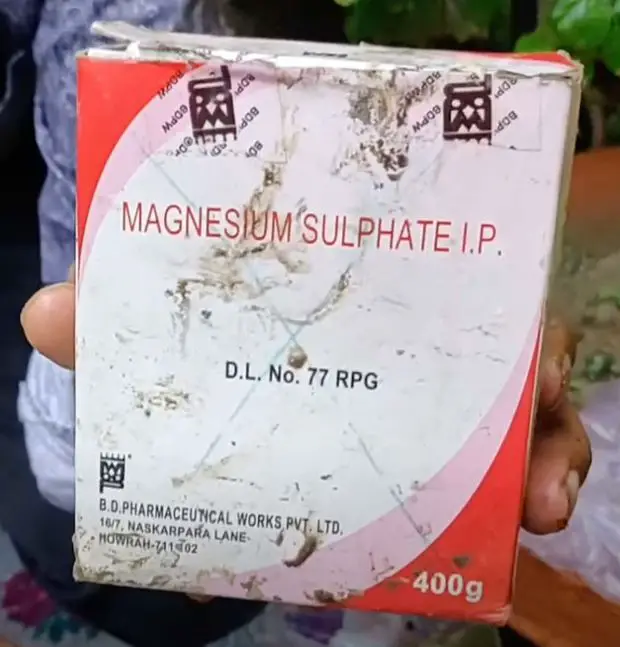
Nitrogen deficiency
Nitrogen is an essential macronutrient, a component of the key structural, metabolic and genetic compounds in the plant. Nitrogen is also a crucial component of organic molecules, such as chlorophyll, amino acids, proteins, nucleic acids, and enzymes involved in all those important processes.
Nitrogen is the nutrient that normally gives that healthy and vibrant green colour in our night-blooming jasmine plant. When there is a lack of nitrogen, the leaves of our jasmine plant start turning yellow and our plant eventually dies off. This deficiency is commonly present, especially in the rainy season, when it rains a lot.
Rain has a tendency to flush the nitrogen of the soil in a process called leaching. Nitrogen is a water-soluble compound, which means, it dissolves and is transported through or in the water. So, when there is water flushed off the soil or out of our pot, that water can carry away the nitrogen of our plant.
Oftentimes, if you miss fertilising in the springtime (rainy season) with a nitrogen-rich fertiliser, (it can be blood meal, fish emulsion, compost tea, or worm castings), your plant will suffer from this leaching process and the result will be those leaves turning yellow and looking weak.
The way we fix this issue is by feeding your plant, every three months and making a good habit of doing it every spring or rainy season and your plant will not undergo these yellowing and deficiency processes.
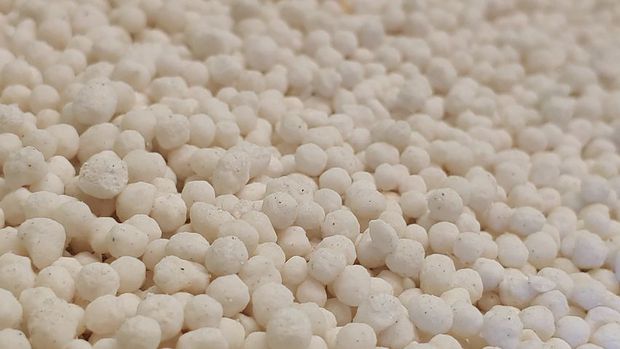
Soil composition
It is absolutely crucial for the success of your night-blooming jasmine to use the highest quality soil. You have your plant beautifully green and it doesn’t turn yellow right away, but after about six to eight weeks, it slowly but progressively starts going downhill and turning yellow. That means, that the soil might not have the right composition and texture. If the soil is very sandy and the water can run through it very quickly, again the nitrogen can be flushed out with it and your plant will develop a nitrogen deficiency.
The opposite is also true, if the soil is too compacted, it doesn’t contain a lot of sand but instead, it contains a lot of clay, Then, that clay will hold on to too much moisture and the roots will rot and will not be able to absorb those nutrients either. When this happens, the bacteria in the soil will start eating up those roots, deteriorating the rooting system and preventing the plant from taking the nutrients it needs.
Another very common problem of having our night-blooming jasmine planted in the wrong soil composition is when our soil has a lot of bark and other mulch material. Those big pieces of bark that haven’t been broken down yet coming from wood compost can get buried out in the soil, and a process called nitrogen sequestration takes place.
Bacteria found in the soil will use the nitrogen (from the soil), that your plant will use as food, to break down the carbon from those big mulch pieces, preventing the plant from up-taking the nitrogen it needs. We can fix these issues by adding some finished compost, as it contains a lot of humus (finished broken-down organic material) if the soil is very sandy and that is going to allow the soil to hold on to nutrients like a sponge.
On the other hand, if the soil is too high in clay, you could add a bit of sand, however, bear in mind, that this is not my preferred method, as if you add too much sand the mixture can result in concrete! making your soil even harder. We can add compost instead, allowing the clay to break up, that way the clay will be providing the minerals for your plant and the finished compost, will break up the rest of the materials allowing the soil to drain up properly.
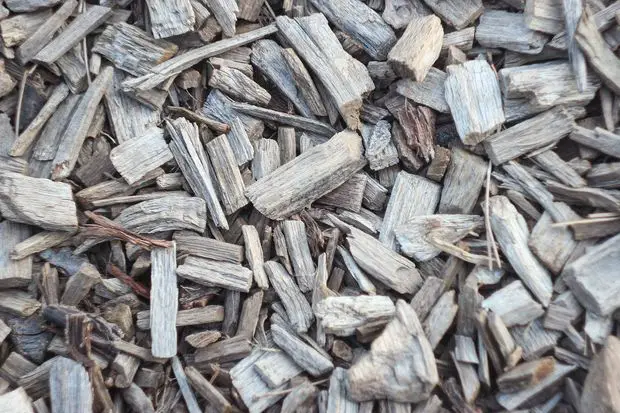
Transplant shock
It is a really common situation that we have just put our plant on the ground, which started beautiful and green, but the moment you plant it on the new soil bed in your garden or pot, their leaves start turning yellow.
When this happens, I recommend to inmediately test your soil with this basic soil testing kit, that will inform you about the status of your planting soil. This way, you will be in a better spot to act promptly providing the perfect environment to your bight-blooming jasmine.
This might be because the plant might need about two weeks to accustom to the new soil and usually they turn green again. This is a phenomenon called transplant shock. That can be because of a change in pH, a change in soil texture, soil moisture, soil temperature, and a wide range of different variants that can lead to this problem in the leaves of our night-blooming jasmine.
All these variants will make the plant shut down temporarily, preventing it from up-taking nutrients and making it overall, stressed, for which those leaves may start looking a bit stunned and yellow.
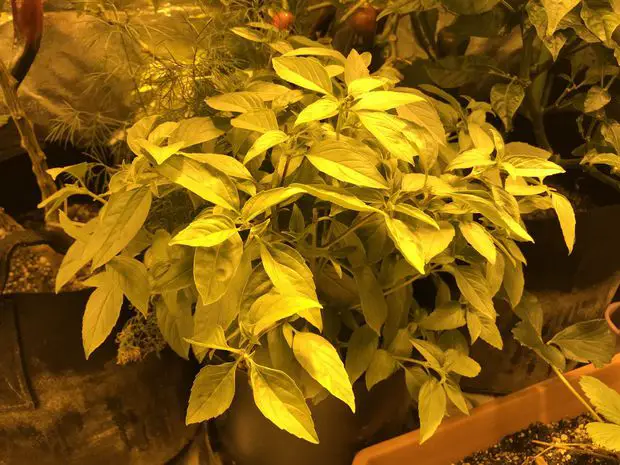
Natural life cycle
Sometimes at the end of the flowering season, the plant changes its priorities, in terms of the processes that the jasmine plant needs to focus on. Nitrogen is not being prioritised for foliage or leaves production anymore, instead, it is prioritising flowering bud production or it is recharging those growth hormones for the following season.
So, you might experience some yellowing of those leaves. This is not bad, it’s just a normal stage at the end of the cycle. The important thing is, to check for spots on those leaves, excessive dryness and all the above-mentioned points that respond to a lack of watering or nutrient uptake.
Infestation of spider mites
Having your night-blooming jasmine plant infested with spider mites is another common way to get its leaves yellow and eventually, they destroy the plant if left untreated. Spider mites feed on the sap of the plant by piercing and sucking the “juice” off the underside of the leaves.
When this happens, a small wound is created on the surface of the leaves in the form of yellow spots giving the leaves a spotty appearance. If the feeding becomes more severe and the burden of mites increases, eventually the leaves of our night-blooming jasmine will look really yellow to bronze tone, compromising the integrity of the plant. It becomes crucial that we treat our plants.
The way we ensure this issue is fixed is by, applying one of my favourite producst out there for pests. It is called Mite Killer Spray and it is the bomb!
In addition to practising good watering and fertilising techniques, and providing our jasmine plant with the proper water regime and optimal feed, as mites thrive in plants under stress.
Make sure to physically remove the mites and their webs from the plant by using a high-pressure water spray or hose.
Lastly, use insecticidal soap and horticultural oil. This will make the leaves taste awful to them, they will then feed on the leaves and it will kill the mites as these chemicals act.
You can also make use of natural predators, such as lady beetles, which naturally control spider mite populations. Lastly, if the infestation is quite severe, ensure you use long-lasting insecticides (containing bifenthrin and permethrin), once every fortnight until the issue is resolved.
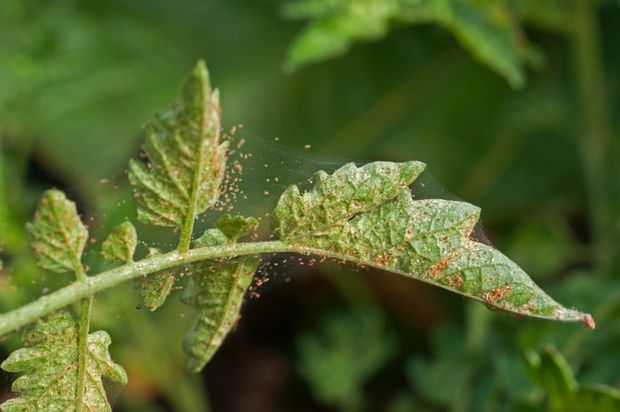
Final thoughts
There you go! Paying attention to all those points described above will help us ensure, that our night-blooming jasmine is getting all the nutrients, water, light and soil requirements to prevent its leaves from looking sad and yellow, in a way that we will be able to preserve their enticing green foliage and overall health of our night blooming jasmine.
